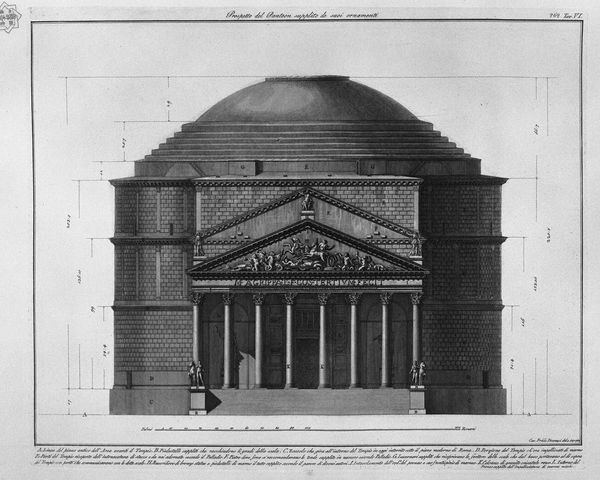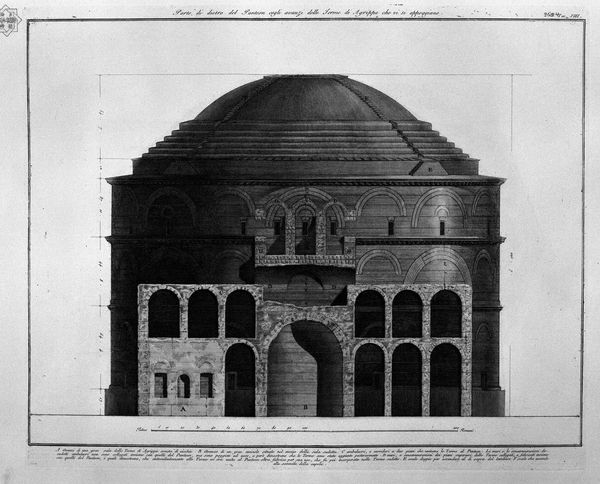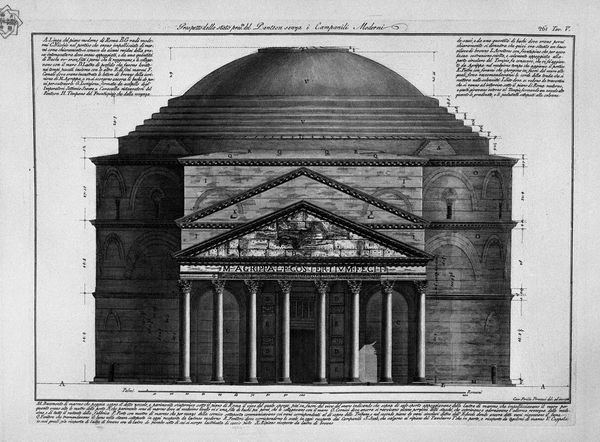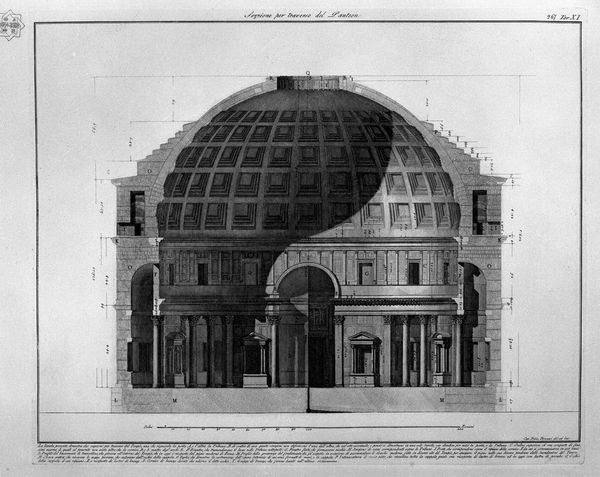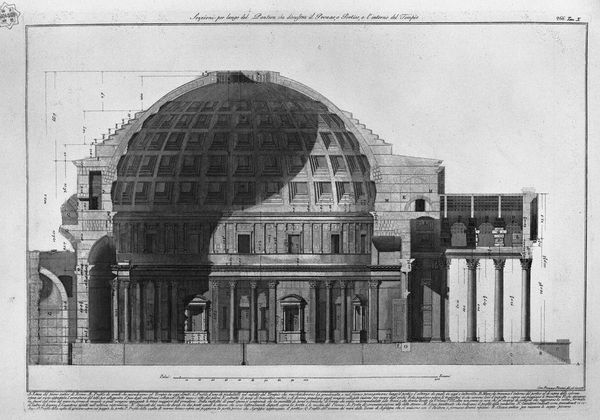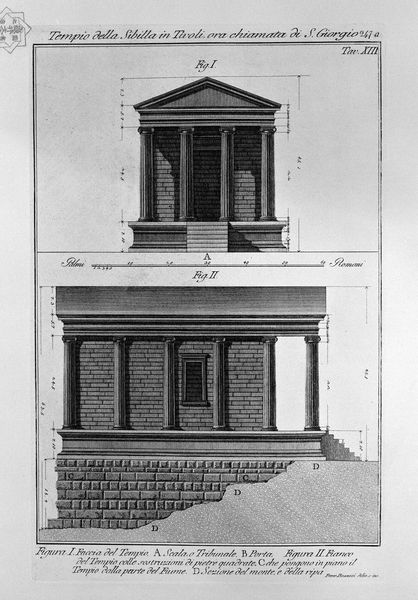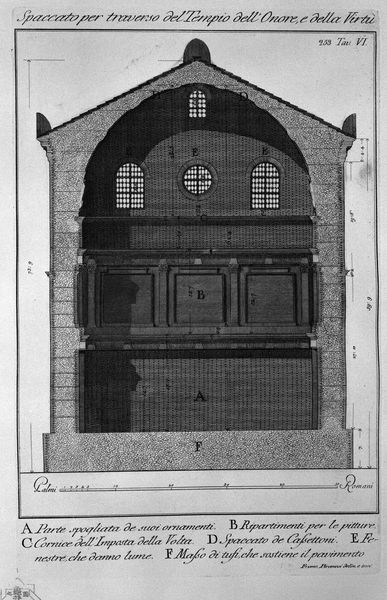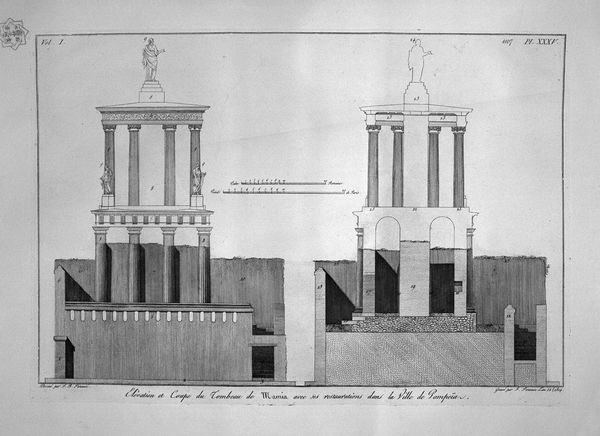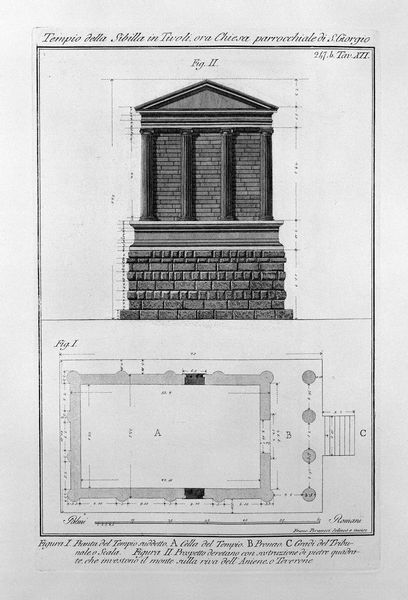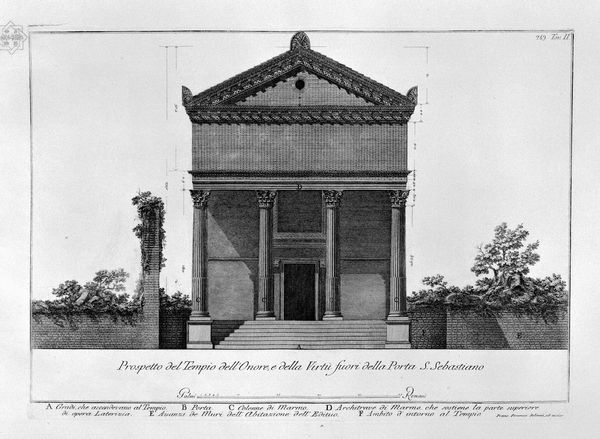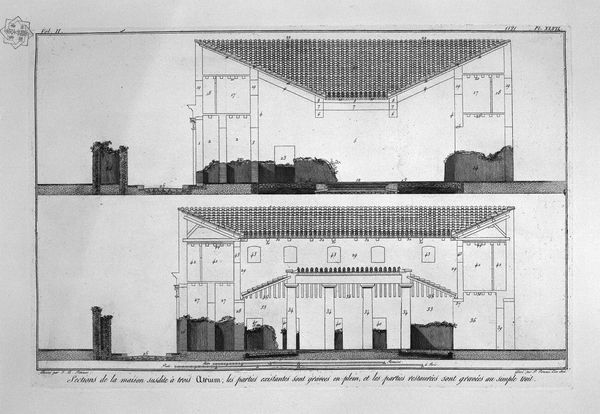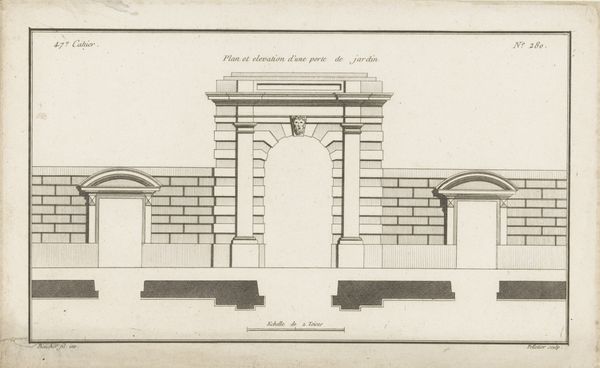
Lateral part of the Pantheon remains of the Baths of Agrippa which are supported
0:00
0:00
drawing, print, etching, paper, ink, architecture
#
drawing
# print
#
etching
#
perspective
#
charcoal drawing
#
sculptural image
#
paper
#
historic architecture
#
romanesque
#
ink
#
cityscape
#
charcoal
#
architecture
Copyright: Public domain
Curator: This is an etching by Giovanni Battista Piranesi, titled "Lateral part of the Pantheon remains of the Baths of Agrippa which are supported." It captures the grandeur, even in ruins. Editor: It strikes me as rather somber. The monochrome palette amplifies the monumentality, while the detail in decay brings a sense of age and weighty permanence. Curator: Indeed. Piranesi was fascinated by Rome, especially its imposing architectural relics. He made quite a career portraying them, contributing greatly to their allure. Editor: So, we aren’t simply looking at a record, are we? It’s an interpretation – perhaps a romanticized one, exaggerating the sublime qualities inherent within such grand ruins. Is that accurate? Curator: Certainly. Etchings like this weren't merely documentary; they shaped perceptions. By emphasizing scale and dramatic perspectives, he instilled a sense of awe, inviting reflection upon time, memory and loss. He’s really delving into how we understand architectural memory. Editor: And by "we," I imagine you are speaking about an audience steeped in specific classical knowledge and perhaps a touch of nostalgia for a lost, "better" era? Curator: Precisely! Consider the influence such imagery had on artistic and political thought across Europe. Architectural symbolism conveyed narratives about power, legacy and continuity, and that is no accident here. These prints served a specific social function. Editor: Do you think modern eyes can still access that emotional landscape, given the gap in our own classical formation? Curator: I believe so. Even divorced from specific historical context, the image powerfully evokes concepts central to the human condition: the rise and fall of civilizations, the impermanence of material things… Editor: It remains relevant then as a symbolic encounter, despite historical shifts. Curator: I agree. Its evocative symbolism transcends the immediate details and resonates universally with viewers across different eras, I feel. Editor: An architectural object lesson, perhaps, in lasting, symbolic resonance.
Comments
No comments
Be the first to comment and join the conversation on the ultimate creative platform.
